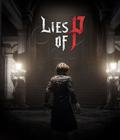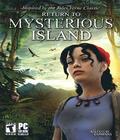Buy 'RETURN TO MYSTERIOUS ISLAND': PC
So what kind of puzzles do you like in your adventure games?
The last few years of adventure game design have seen a leaning towards self-contained puzzles. Plucking good old Myst off the shelf as an example, we find a game structure where the puzzles are based around where you are and what you find in those locations. Rarely in Myst do you need to pick up an item, all of your options are instead laid out in front of you, often as buttons or sliders or switches which affect the game world. Often the puzzle is in figuring out the "laws" of the machine you're working with.
Return to Mysterious Island comes at the concept of an adventure game from a different, older angle. Almost all of the puzzles (there are a few exceptions here and there) are built around the concept of item manipulation. Study a problem or a need, and then construct something to solve that problem or fill that need out of what you have. For most of us, this is a kind of puzzle that's much more familiar and close to home. You never really need to – just as an example – sit down and rewire your apartment building's elevator to get it moving to the ground floor, but you do occasionally need to sit down and combine flour, eggs, water, sugar, and some flavoring to make a cake. If you enjoy looking at a bunch of random objects and thinking about how to build useful tools out of them, you'll love this game as much as I did.
(This has been your latest installment of Gordy's Game Design Corner, in which I ramble entirely too long about basic tenets of game design. I just feel it's important to get a feel for the basics across, so you folk can understand why I enjoyed or disliked a game and decide if you would, too.)
Now that I've given away how much I enjoyed this one, let's get to the plot, shall we?
Jules Verne's Mysterious Island is a classic tale of survival, ranking right up there with Robinson Crusoe. More people have heard of Crusoe, mind you. The original novel is the tale of five men and one dog who, after a mishap with a hot air balloon, find themselves stranded on a remote and uncharted island. Since they lack a means to leave, they set about building a new life there, building their own windmill and generally leaving their mark on nature as they combine their diverse talents to keep themselves alive. Fate seems to have a hand in their survival at first, but it's later revealed that they've actually been receiving help from one Captain Nemo (some of you might be familiar with this guy). By the end of the novel, the island has been destroyed in a titanic volcanic eruption.
Obviously, that last part didn't really happen according to the game. This isn't Return to the Smoking Crater That Used To Be Mysterious Island, now is it? (That would be an even shorter game than this one is.)
Instead, the island is intact and beautiful when Mina washes up on shore after her ship wreck. Half drowned and starved to the point of weakness, she's still alive enough to push herself to her feet and get to work nursing herself back to health. No one else is going to do it for her, after all. To keep herself alive, she has to work out the little things she'd always taken for granted, things like fire, medicine, and electricity (to recharge her cell phone/GPS wristwatch, which goes battery-dead the moment she turns it on.). Luckily, Mina is one of the most competent adventure game heroines I've ever seen. They never do give you her last name, but judging by the ease with which she cobbles together makeshift hardware from items laying around the island, it might just be "MacGyver."
This is all done through a pretty streamlined interface. The pointer lights up or turns into an icon when aimed at something you can interact with, and turns into a crossed-out icon when you find something you can use but not with the item (or lack thereof) you have selected from your inventory. A right-click brings up the inventory screen.
You will see the inventory screen a lot in this game. By the end of the game, I had three out of five "pages" packed full of various items, with a couple more tucked down in the combination tray. As hinted earlier, item combinations are where this game shines. I've played a lot of adventure games, and I've never seen so many possibilities. Combining items is as easy as clicking one on another, and if it's a valid combination, both items drop down into a tray at the bottom of the screen. There it shows the pair you have, plus question marks for any unknown pieces needed to complete construction. (As an example, "feathers" + "wicker" + "???") Add the missing pieces, in this case some sharp thorns, and you've got arrows.
The interesting thing about this system is that you're not often limited to one type of item if another would make sense. Other sticks can be used in place of the wicker, porcupine quills in place of the thorns, and you've still made arrows. This not only adds a nice level of flexibility, but it also lets you move forward even if you missed an item tucked away in a remote corner somewhere. There are, for example, at least three ways to charge up Mina's broken watch battery, and I think I could construct a fourth if I could get the right conditions set up. This makes for an atmosphere that's forgiving without actually holding your hand through the puzzles. You still need to come up with your own solutions, but if it seems like it should work, it probably will.
If you want an additional level of failsafe, once you get Mina's watch back up and running, it provides information from its online encyclopedia about what an item can be used for. (This is a seriously cool bit of kit, this watch. It's a shame it's probably a plot token and not based on anything currently existing.) I can see why they did this, because about the time you can reasonably be expected to have the watch powered up, you're also starting to play around with the fun stuff like crafting gunpowder or maybe nitroglycerin, and that's difficult to do without a guide of some kind. On the other hand, to get to that point in the game, you'd have to solve some tougher puzzles on your own. The encyclopedia didn't seem like anything but a redundant hint source to me, and there's no way to turn it off, but it does help make the game even more friendly towards beginning players. Someone out there is going to need it, so it's just as well that it's there.
You also get a monkey companion that can go places and do things Mina can't, as well as giving her someone to talk to. Any game can be made better by including a monkey. Really. It's true. Plus, you can give the monkey dynamite. Tell me that's not worth $20 all by itself.
Right, okay. Enough of that.
Return to Mysterious Island is a fairly good looking game in all the ways that matter. It's not going to run head to head with Myst IV in any significant sense, but all the renderings are very nice looking and the inventory items are easy to tell, at a glance, what each one is. If I had to nitpick, I'd have to say that some of the water effects aren't as nice as they could be, but like I said, that'd be nitpicking. I want to applaud in particular this game's approach to cutscenes, which are done as stylish black and white line-drawn artwork. They look like something you could reasonably expect to find in a Verne novel, and they convey a little more sense of atmosphere than a pre-rendered animation would. The audio is also rather lively, rich with birdcalls and bits of music and plenty of atmospheric effects. Also, more monkeys. You can never have too many monkeys, you know.
There are a couple of downsides, mind you. Just offhand, I'd have to say that I could have used a little more feedback now and then from the mouse pointer. It would often show me that an object was impossible to interact with, but wouldn't tell me why. Is it out of reach? Sharp? Is that where I'm supposed to set something down? It's hard to tell from a flashing "NO" symbol. Also, every time you pick up an item, either off the ground or by taking apart a combination, it goes into a small holding box at the top of your inventory until you manually place it somewhere. This just seems like an unneeded extra step to the inventory process. Tiny problems, that's all. There are a couple of timed sequences as well, but the timer bar is shown onscreen, and you get to restart them instantly if you fail. Still, timed sequences will put some people right off a game, so they should be mentioned.
What we've got here, really, is a very solid and fun adventure game. It's a little too short, but there's a good bit of replay value, since you score points for solving puzzles in different ways and with different item combinations and every hundred points unlocks some bonus artwork. I also found it rather easy, but that may have been just me. Return to Mysterious Island has a likeable main character (who I hope we see more of in the future), a brief but entertaining plotline, and enough clues to keep you moving along steadily when you get stuck. Fans of the novel will get a treat seeing some of the locations described there rendered out in front of them, and people who've never heard of the novel will still find a worthwhile game.
Oh yes. Also, you can install this game, put the CD away, and run it without the CD in the drive. Thank you very much, developers. With companies bending over backward to install broken copy protection schemes left and right, the lack thereof is refreshing. My PC thanks you.
Score: 8.7/10
More articles about Return to Mysterious Island











 Return to Mysterious Island, a puzzle/adventure game is based on the novel by Jules Verne, follows Mina, a strong young woman alone on a round-the-world sailing expedition. Caught in a tremendous storm, she is stranded on the shores of a wild and uninhabited island. As she explores her new surroundings, she uncovers artifacts, living spaces and technologies left behind by the people who came before her to this uncharted island.
Return to Mysterious Island, a puzzle/adventure game is based on the novel by Jules Verne, follows Mina, a strong young woman alone on a round-the-world sailing expedition. Caught in a tremendous storm, she is stranded on the shores of a wild and uninhabited island. As she explores her new surroundings, she uncovers artifacts, living spaces and technologies left behind by the people who came before her to this uncharted island.



































